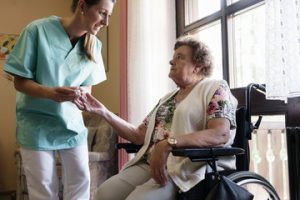Skin Tag Removal Phoenix is a quick and comfortable procedure. In most cases, it takes 10 minutes or less to complete the treatment.

Home remedies can help remove small skin tags, but never try to cut them off yourself-this can lead to bleeding and infection.
For a more permanent solution, dermatologists use techniques like electrodesiccation, which uses electricity to remove the growth; cryosurgery, which uses liquid nitrogen to freeze off the lesion; or excision, where surgical scissors are used to snip away the tag.
Skin tags aren’t harmful, but they can be irritating if they get caught on clothing or jewelry or if they’re located in an area that other people can see. Rather than cutting off the tag, which can lead to infection or scarring, it’s best to try one of the many home remedies for skin tag removal.
Generally, these home treatments involve a natural substance that you might already have in your kitchen, like apple cider vinegar or coconut oil. They require consistent application over time to show results, but they’re also more cost-effective than clinical methods that may involve anesthesia or other chemicals.
Garlic is another common ingredient in home remedies for skin tags. The allicin in garlic is believed to have anti-inflammatory properties and can help shrink the skin tag. To use it, crush a clove of garlic and apply it directly to the skin tag. Cover with a bandage and leave it on overnight. Repeat as needed until the skin tag falls off.
Vitamin E oil is an antioxidant that can help improve skin health and promote healing. It’s also believed to soften skin tags, making them easier to remove. To use it, simply puncture a vitamin E capsule and squeeze out the oil. Apply the oil directly to the skin tag and cover with a bandage. Repeat daily until the skin tag falls off.
Another popular option is a blend of essential oils. A combination of frankincense, lavender, and lemon is thought to be especially effective at eliminating skin tags. The oil is then mixed with a carrier oil, such as jojoba or coconut oil, to avoid irritation.
It’s important to note that although home remedies can be effective for removing small skin tags, they should never be used in place of a medical consultation. If your skin tag appears to be growing quickly or changing in appearance, it’s best to consult a doctor for professional removal in a clinical setting. This will ensure that you receive the safest and most accurate care possible. If you’re considering a home treatment, always dilute strong ingredients like apple cider vinegar or tea tree oil to prevent skin irritation and perform a patch test first to ensure your skin can tolerate it.
Tea Tree Oil
Skin tags can be an annoyance, especially when they get caught on clothing or jewelry. While there is anecdotal evidence that certain home remedies such as apple cider vinegar or garlic can help to remove them, it’s best to seek professional treatment in a medical setting. This will minimize the risk of infection, bleeding or scarring.
Many people use tea tree oil as a natural remedy for skin tag removal because of its antifungal and antibacterial properties. A few drops of the oil can be mixed with a carrier such as coconut or olive and applied directly to the skin tag. This is often repeated several times a day until the skin tag begins to dry out and fall off.
Other oils that have been used as natural skin tag treatments include oregano oil, frankincense and lavender. When mixing essential oils, it’s important to always dilute them with a carrier so they don’t cause irritation or burn on the skin. It’s also important to test the oil on a small area of your body before applying it widely to see how your skin reacts.
Garlic is another popular option for natural skin tag removal because of its anti-inflammatory and antioxidant properties. The allicin in garlic can be released when it is crushed or chopped and applied directly to the skin tag. This method can be painful and should only be performed with the approval of a doctor, as it can increase blood flow to the area, which may lead to excessive bleeding or swelling.
Some people have also reported that liquid iodine can be an effective treatment for removing skin tags, although there is limited scientific evidence of this. Iodine is an antiseptic and has been known to kill off viruses in the skin and nails, and it may also dry out and shrink a skin tag. This home remedy should only be attempted with the approval of a dermatologist, and it is not recommended for delicate areas such as the eyelids or genitals.
It’s also important to remember that any method for removing skin tags should be done carefully and with the approval of a physician, particularly if it involves cutting or clipping. Using sharp tools like knives or nail clippers can result in a bleeding, swollen and painful tag. Trying to cut off large or multiple skin tags is also dangerous and should be avoided, as it could lead to infection.
Apple Cider Vinegar
ACV is a popular home remedy for a variety of conditions, including skin tags. Its acidity is thought to cause the tissue to break down and eventually fall off. ACV can also help remove dead skin cells, which may contribute to a decrease in the size of a skin tag. However, if you are using this method for a large skin tag or in the area around your eyes, it is important to dilute the vinegar before applying. Undiluted apple cider vinegar can irritate the skin and lead to chemical burns.
You may see many online users claiming that this is a safe and effective home remedy for skin tags on Reddit and other beauty blogs, but you should always check with a medical professional before trying any new treatment or product. The truth is that there are no scientific studies supporting this claim, and ACV can irritate or even burn your skin.
Castor oil is another natural remedy that has been used for generations as a way to treat various skin ailments. It is often combined with baking soda to provide a gentle and safe method for removing a skin tag. To use this remedy, mix two parts castor oil with one part baking soda and apply the mixture to the skin tag. You can then cover the tag with a bandage and leave it on overnight. Repeat this process every night until your skin tag falls off.
Another natural option for a home remedy is garlic. Garlic is known for its anti-inflammatory and antioxidant properties, which may aid in the removal of skin tags. This is largely due to the allicin compound found in it, which has been shown to prevent apoptosis and inhibit growth of cancer cells. To use this home remedy, simply crush or chop a clove of garlic and apply it to your skin tag. You can also apply it to the surrounding area to promote healthy and beautiful skin.
There are many different ways that you can naturally remove a skin tag at home, but it is important to remember that it is best to consult with a medical professional before trying any of these methods. They can be much more effective and safe when compared to over-the-counter or at-home treatments, and they can give you the confidence that your skin tag will be safely removed.
Liquid Iodine
Skin tags are soft, fleshy outgrowths that hang from the skin. They are not cancerous, and can often be safely removed at home by using various methods. However, removing these benign growths without professional help can lead to infection, bleeding and pain. It is also difficult for an untrained eye to distinguish a skin tag from a mole, wart or other lesion that might require treatment with a doctor.
Many commercial products claim to remove skin tags. These typically work by chemically burning or drying out the skin tag, and may contain ingredients like salicylic acid or tea tree oil. Some of these products may irritate the skin and should only be used on non-sensitive areas.
Anecdotal reports suggest that liquid iodine can encourage skin tags to drop off. It is important to protect the surrounding skin with petroleum jelly or coconut oil before applying iodine. It is also necessary to monitor the area for irritation or staining.
Liquid iodine can be purchased in most pharmacies, but should only be used under the guidance of a medical professional. Applied to the skin, iodine destroys the cells of the outer layer of the skin, causing the tag to die and eventually fall off. The iodine can also obscure the appearance of the lesion, which could result in misdiagnosis and inaccurate treatment.
Another home remedy involves rubbing a mixture of castor oil and baking soda on a skin tag. After applying the mixture, cover with plastic wrap or a banana or papaya peel. This treatment should be repeated two or three times per day until the skin tag drops off.
A common method for removing skin tags is cryotherapy, or freezing the lesion with liquid nitrogen to cause it to die and fall off. It is a relatively safe and effective option, but should only be performed by an experienced medical professional. Another way to remove a skin tag is ligation, or cutting off the blood supply to the skin tag. This can be done by a physician and is generally considered to be the safest option.
